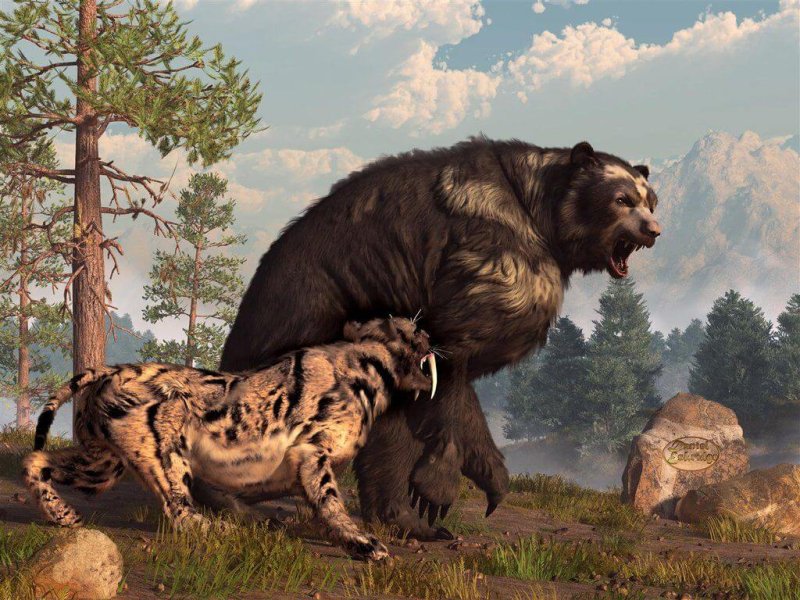North America’s largest predatory mammal was probably the massive short-faced bear (Arctodus simus), said Ross MacPhee, senior curator of mammals at the American Museum of Natural History in New York City. Sometimes affectionately called the “bulldog bear,” this now-extinct creature had a signature short, broad muzzle. It stood around 5.5 feet (1.6 meters) tall at the shoulder and over 11 feet (3.4 m) on its lanky hind legs, according to the University of Iowa Museum of Natural History.
It can be difficult for scientists to gauge the exact body weight of an extinct species, because they have to extrapolate those numbers using existing species as benchmarks, MacPhee told Live Science in an email. However, paleontologists comfortably estimate that the short-faced bear probably weighed around 1,540 pounds (700 kilograms).
Modern polar bears (Ursus maritimus) aren’t too far off — the largest males stand around 5 feet (1.5 m) at the shoulder and weigh around 1,300 pounds (600 kg), according to Polar Bears International.
Each of these creatures, however, eventually died out as the result of environmental upheaval. Like many highly specialized predators, once their prey became scarce, they simply couldn’t keep up with their energy needs.































